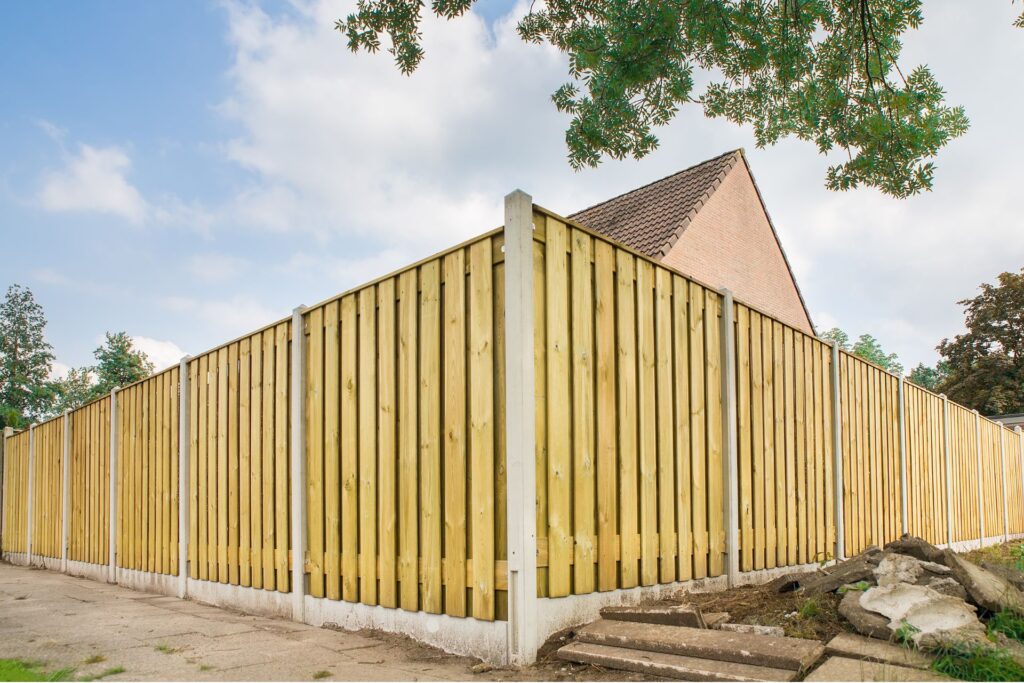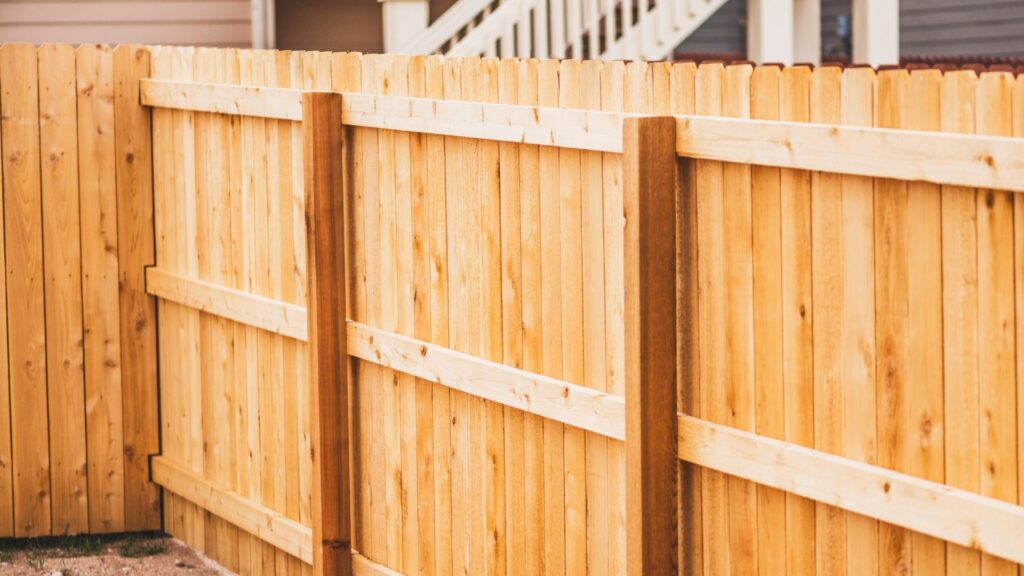Welcome to our comprehensive guide on finding the best fencing for privacy! In today’s world, creating a private sanctuary in your own backyard is more important than ever, and the right fence can make all the difference. Whether you’re looking to block out nosy neighbors, enhance your home’s security, or simply enjoy some peace and quiet, choosing the perfect privacy fence involves considering a variety of factors such as material, design, cost, and maintenance. This guide will walk you through the top options available, helping you make an informed decision that suits your needs and budget. Let’s explore the best fencing solutions that offer both privacy and style, ensuring your outdoor space becomes a true retreat.
The best fencing for privacy includes wood, vinyl, metal, and composite materials. Wood fences, such as board-on-board and stockade designs, offer a natural look but require regular maintenance. Vinyl fences are low-maintenance and durable, ideal for solid panel designs. Metal options like aluminum and steel provide high security and longevity, often combined with privacy slats. Composite fences offer a wood-like appearance with minimal upkeep. Each material and design caters to different preferences and budgets, ensuring you can find the perfect solution for your privacy needs.
Why Privacy Fencing Is Important
Privacy fencing is more than just a boundary around your property; it’s an investment in your peace of mind and the overall functionality of your home. Here’s why privacy fencing is essential for homeowners:
Home Privacy
One of the most compelling reasons homeowners opt for privacy fencing is to create a personal sanctuary away from the prying eyes of neighbors and passersby. In today’s world, where houses are often built closer together, maintaining a sense of privacy can be challenging. A well-constructed privacy fence serves as a barrier, giving you the freedom to enjoy your backyard, host gatherings, or simply relax without worrying about being watched. This level of seclusion is invaluable, allowing you to fully utilize and enjoy your outdoor space without unwanted interruptions.
Safety and Security
Privacy fences do more than just keep prying eyes at bay; they also play a crucial role in enhancing the security of your property. A solid, high fence can act as a strong deterrent to potential intruders, making it harder for them to access your home. It creates a physical barrier that not only protects your belongings but also provides a safe environment for your family. For families with children or pets, a privacy fence ensures they can play freely within the yard without the risk of wandering off or encountering strangers. Additionally, it adds an extra layer of protection against wildlife, which can be particularly important in certain areas.
Noise Reduction
Another often overlooked benefit of privacy fencing is its ability to reduce noise pollution. Depending on the materials used, a privacy fence can significantly diminish the amount of noise entering your property. This is especially beneficial for homes located near busy roads, schools, or commercial areas. By absorbing or deflecting sound waves, privacy fences create a quieter, more serene outdoor space where you can unwind. This noise reduction can also enhance the overall comfort of your home, making your indoor spaces quieter and more conducive to relaxation and concentration.
In conclusion, privacy fencing is a multifaceted investment that provides numerous benefits to homeowners. From ensuring privacy and enhancing security to reducing noise pollution, a well-chosen, and properly installed privacy fence can significantly improve your quality of life. It allows you to enjoy your property to the fullest, knowing that you are protected and secluded in your personal haven.
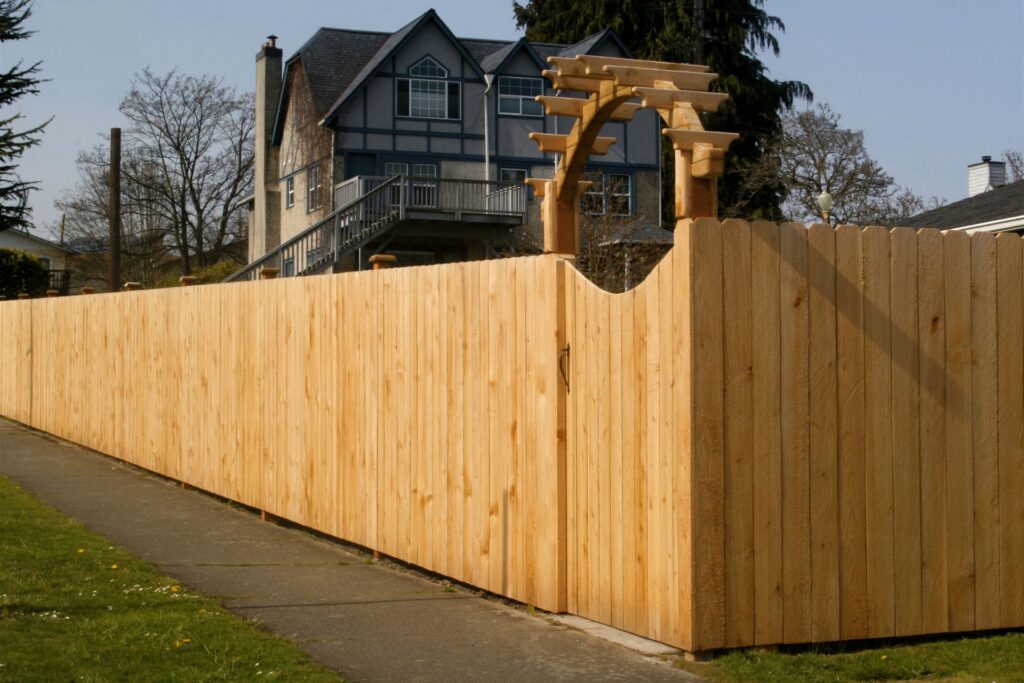
Key Factors To Consider When Choosing Privacy Fencing
Material
When it comes to privacy fencing, the material you choose is crucial. There are several popular options, each with its own set of advantages and disadvantages.
- Wood: A classic choice, wood fences offer a natural and warm look. They can be customized in various styles and can be painted or stained to match your home’s exterior. However, wood requires regular maintenance, including painting, staining, and protection against termites and rot.
- Vinyl: Vinyl fences are durable and require minimal maintenance. They come in various styles and colors, mimicking the look of wood without the upkeep. Vinyl is resistant to pests and rot, but it can be more expensive initially and may become brittle in extreme weather conditions.
- Metal: Metal options such as aluminum and wrought iron are strong and long-lasting. They offer a modern look and require minimal maintenance. However, metal fences can be more expensive and might not provide as much privacy unless combined with other materials or design elements.
- Composite: Made from a mix of wood fibers and plastic, composite fences offer the appearance of wood with the low maintenance of vinyl. They are resistant to pests and weather, but they can be pricier than other options.
Height and Design
The height and design of your fence are critical in ensuring your privacy. Taller fences are typically better at blocking views and reducing noise. Common heights range from 6 to 8 feet, but local regulations may dictate the maximum height allowed.
Design also plays a significant role. Solid panels, lattice tops, and shadowbox designs are popular for privacy. Solid panels provide the most privacy, while lattice tops can add a decorative element without compromising too much on seclusion. Shadowbox designs offer a good balance, as they appear solid from a distance but allow airflow and light to pass through.
Local Regulations
Before installing a fence, it’s essential to check your local zoning laws and regulations. These rules can dictate the maximum height, placement, and even the materials you can use. Some neighborhoods have homeowners’ associations (HOAs) with additional restrictions. Failure to comply with these regulations can result in fines or having to modify or remove your fence, so it’s best to be informed before you start your project.
Maintenance
Maintenance is a significant factor to consider when choosing your fence material and design.
Wood: Requires regular upkeep, including painting, staining, and treating for pests.
Vinyl: Low maintenance; typically only needs occasional cleaning with soap and water.
Metal: Minimal maintenance but may require painting or rust treatment over time.
Composite: Low maintenance; resistant to most environmental damage but may need occasional cleaning.
Understanding the maintenance needs of each material can help you choose the one that fits your lifestyle and commitment level.
Budget
Your budget will significantly influence your choice of material and design.
- Wood: Generally, wood is an affordable option, but costs can add up with ongoing maintenance.
- Vinyl: Higher upfront cost but low maintenance can make it cost-effective in the long run.
- Metal: Typically more expensive, especially wrought iron, but its durability can justify the investment.
- Composite: High initial cost but low maintenance, making it a potentially good long-term investment.
By balancing the initial costs with long-term maintenance expenses, you can choose a fence that fits your financial plan while still providing the privacy you desire.
Choosing the right privacy fence involves considering various factors to ensure it meets your needs and complies with local regulations. By evaluating the material, height, design, maintenance requirements, and budget, you can find the perfect fence to enhance your property’s privacy and aesthetic appeal.
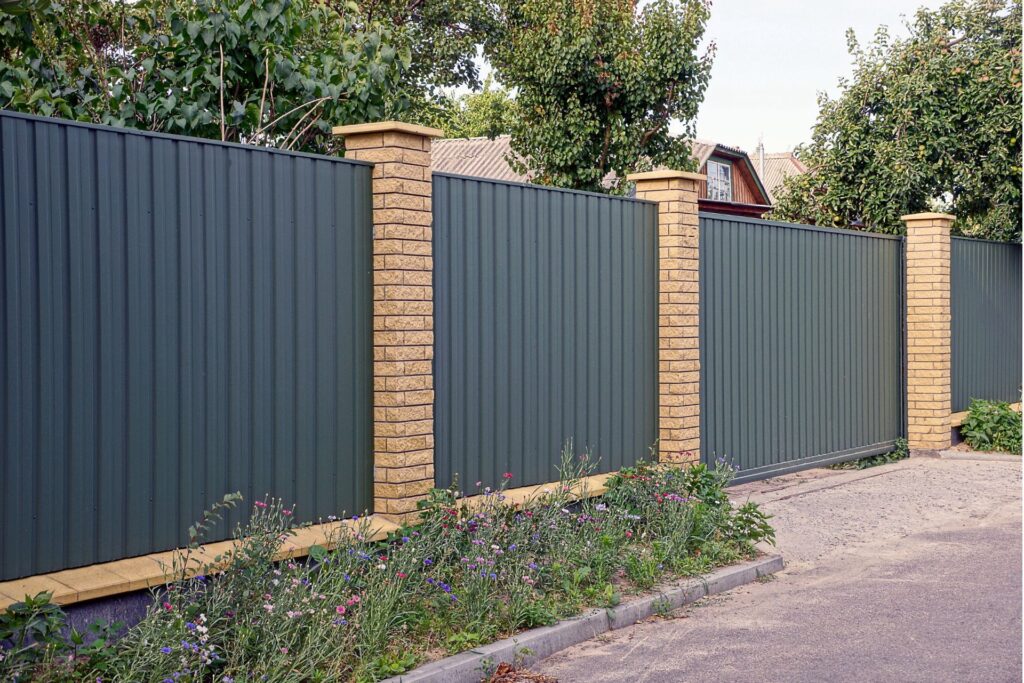
Best Materials For Privacy Fencing
Choosing the right material for your privacy fence is crucial for both aesthetics and functionality. Here’s a comprehensive guide to help you understand the best materials available for privacy fencing, ensuring your yard remains a sanctuary from prying eyes.
Wood Fences
Description: Wood fences come in various types, such as cedar, redwood, and pine. Each type offers unique qualities that make wood a versatile choice for fencing.
Pros:
- Natural Look: Wood provides a warm, natural appearance that blends seamlessly with outdoor environments.
- Customizable: You can paint, stain, or shape wood to match your preferred style.
- Effective for Privacy: Solid wood fences block views and noise effectively, offering substantial privacy.
Cons:
- Maintenance: Wood requires regular upkeep, including painting, staining, and sealing to protect it from the elements.
- Susceptible to Rot and Pests: Without proper maintenance, wood can be prone to rot and pest infestations.
Popular Designs
- Board-on-Board: Overlapping boards provide complete privacy and a sturdy structure.
- Stockade: Boards are placed tightly together with pointed tops, offering high privacy.
- Lattice-Top: A decorative lattice pattern on top of solid panels adds a stylish touch.
Vinyl Fences
Description: Vinyl fencing is made from durable plastic, making it a resilient option for privacy fencing.
Pros:
- Low Maintenance: Unlike wood, vinyl doesn’t require painting or staining. It’s easy to clean with soap and water.
- Weather-Resistant: Vinyl can withstand harsh weather conditions without warping or cracking.
- Long-Lasting: This material can last for decades without significant deterioration.
Cons:
- Higher Upfront Cost: Initial installation of vinyl fences can be more expensive than wood.
- Limited Color Options: Vinyl comes in fewer colors, which might limit your aesthetic choices.
Popular Designs
- Solid Panel: Provides complete privacy with solid, interlocking panels.
- Lattice-Top: Combines solid panels with a decorative lattice design at the top.
- Shadowbox: Alternating panels create a visually appealing, semi-private fence.
Metal Fences (Aluminum, Steel, Wrought Iron)
Description: Metal fences, including aluminum, steel, and wrought iron, are known for their strength and durability.
Pros:
- Long-Lasting: Metals are incredibly durable and can last for many years with minimal maintenance.
- Low Maintenance: These fences require little upkeep, often just occasional cleaning.
- High Security: Metal fences are sturdy and difficult to breach, enhancing security.
Cons:
- Can Be More Expensive: The cost of materials and installation can be higher than wood or vinyl.
- May Not Offer Complete Privacy: Without additional features, metal fences can be see-through.
Popular Designs
- Decorative Panels with Privacy Slats: Combine aesthetics with functionality by adding slats for privacy.
- Corrugated Metal: Solid panels that offer both privacy and a modern look.
Composite Fences
Description: Composite fencing is crafted from a blend of wood fibers and plastic, offering the best of both materials.
Pros:
- Low Maintenance: Similar to vinyl, composite fences require minimal upkeep.
- Looks Like Wood: Provides the appearance of wood without the associated maintenance.
- Durable: Resistant to rot, warping, and pests.
Cons:
- Higher Cost: Composite materials tend to be more expensive upfront.
- Limited Styles: There are fewer design options compared to wood or metal.
Popular Designs
- Solid Panel: Offers maximum privacy with solid, seamless panels.
- Shadowbox: Creates an attractive, overlapping pattern for a semi-private fence.
By understanding the pros and cons of each material, you can make an informed decision that suits your privacy needs and aesthetic preferences. Whether you prefer the classic charm of wood, the low maintenance of vinyl, the strength of metal, or the durability of composite, there’s a perfect privacy fence out there for your yard.
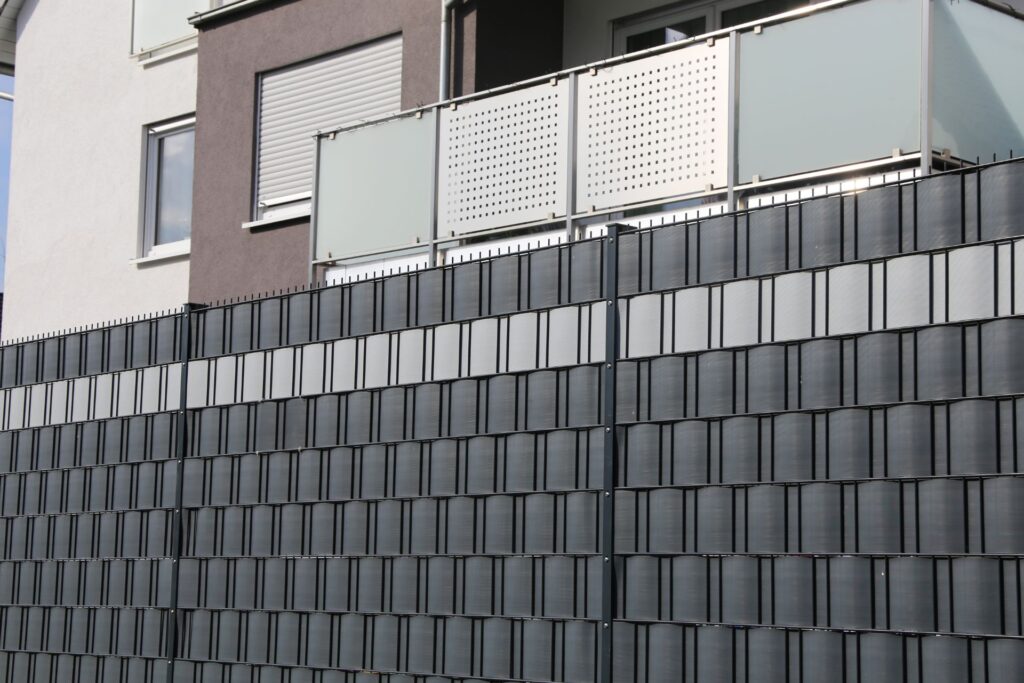
Best Designs For Privacy Fencing
When it comes to ensuring privacy in your backyard, choosing the right fence design is crucial. Not only does it keep prying eyes away, but it also adds an aesthetic appeal to your property. Here are some of the best designs for privacy fencing that you can consider:
Solid Panel Fences
- Description: Solid panel fences are the go-to choice for those seeking complete privacy. These fences consist of completely solid panels, leaving no gaps for onlookers to peek through. They create a robust barrier that not only enhances privacy but also adds a sense of security to your home.
- Best Materials: The most popular materials for solid panel fences include wood, vinyl, and composite. Wood offers a classic and natural look, perfect for a traditional or rustic aesthetic. Vinyl, on the other hand, requires less maintenance and is resistant to weathering. Composite materials combine the best of both worlds, offering durability and a wood-like appearance with minimal upkeep.
Shadowbox Fences
- Description: Shadowbox fences are an excellent option if you’re looking for a semi-private design. These fences feature alternating panels on either side of the fence, creating a visually appealing pattern that allows some light and air to pass through while still providing substantial privacy.
- Best Materials: Wood and vinyl are the preferred materials for shadowbox fences. Wood provides a charming and natural look that can be customized with different stains and finishes. Vinyl shadowbox fences, meanwhile, are durable and low-maintenance, making them a practical choice for homeowners.
Lattice-Top Fences
- Description: Lattice-top fences are a beautiful combination of solid panels with an intricate lattice design on top. This design not only ensures privacy for the lower part of the fence but also adds a decorative touch with the lattice pattern, allowing light to filter through.
- Best Materials: Wood and vinyl are commonly used for lattice-top fences. Wooden lattice-top fences offer a timeless appeal and can be painted or stained to match your landscape. Vinyl options provide a similar aesthetic with added durability and ease of maintenance.
Horizontal Slat Fences
- Description: Horizontal slat fences bring a modern and sleek look to your property. These fences consist of horizontal slats that create a contemporary appearance while still offering privacy. The spacing between the slats can be adjusted based on your privacy needs.
- Best Materials: The best materials for horizontal slat fences include wood, composite, and metal. Wooden slat fences can be customized with different stains to enhance the natural beauty of the wood. Composite materials offer the look of wood with greater durability, and metal slats provide a sturdy and industrial aesthetic.
Living Fences
- Description: For a natural and eco-friendly approach to privacy, consider living fences. These fences use hedges or climbing plants on trellises to create a green barrier. Not only do they offer privacy, but they also contribute to the environment by providing habitats for wildlife and improving air quality.
- Best Plants: The best plants for living fences include evergreen shrubs, bamboo, and ivy. Evergreen shrubs provide year-round coverage, bamboo grows quickly and creates a dense barrier, and ivy can climb and spread over trellises, adding a lush, green appearance.
Each of these privacy fence designs has its own unique benefits and can be tailored to suit your specific needs and preferences. Whether you prefer the solid and secure look of panel fences or the natural appeal of living fences, there is a design that will enhance both the privacy and beauty of your outdoor space.
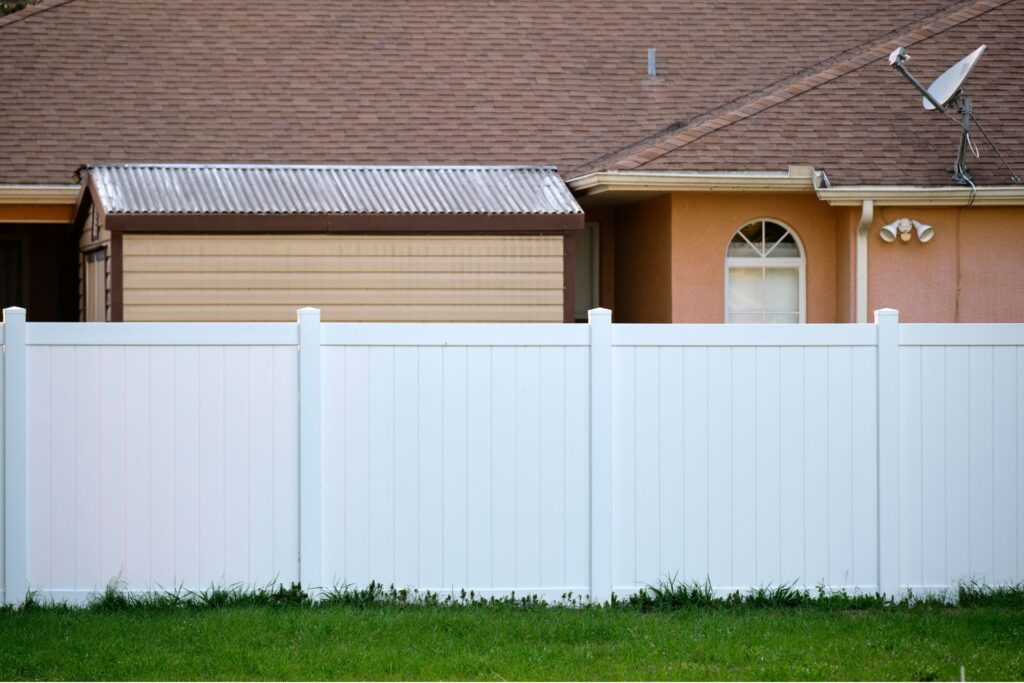
Installation And Maintenance Tips
DIY vs. Professional Installation
When considering fence installation, one of the first decisions you need to make is whether to tackle the project yourself or hire a professional. Each option has its advantages and disadvantages, and the best choice depends on your specific needs and circumstances.
DIY Installation
Pros:
- Cost Savings: Installing a fence yourself can save you a significant amount of money since you won’t have to pay for labor costs.
- Flexibility: You have the freedom to work on your own schedule, taking as much time as needed to complete the project.
- Personal Satisfaction: There’s a certain pride that comes with completing a DIY project, and installing a fence is no exception.
Cons:
- Time-Consuming: Fence installation can be a time-consuming task, especially if you lack experience.
- Physical Demand: The work can be physically demanding, involving heavy lifting, digging, and precise measurements.
- Potential Mistakes: Without professional expertise, there’s a higher risk of making errors that could affect the fence’s durability and appearance.
Professional Installation
Pros:
- Expertise: Professionals have the experience and knowledge to install fences correctly and efficiently.
- Time-Saving: Hiring a professional can save you time and effort, allowing you to focus on other tasks or relax.
- Quality Assurance: A professionally installed fence is likely to be more durable and visually appealing.
Cons:
- Cost: Professional installation can be expensive, with labor costs adding significantly to the overall expense.
- Scheduling: You may need to work around the contractor’s schedule, which might not always align with your preferred timeline.
Basic Maintenance Tips
Maintaining your fence is essential to ensure its longevity and keep it looking great. Here are some basic maintenance tips:
- Regular Cleaning: Periodically clean your fence to remove dirt, mold, and mildew. Use a mild detergent and a soft brush for wooden fences, while a pressure washer can be effective for metal and vinyl fences.
- Staining and Sealing: For wooden fences, staining and sealing are crucial to protect against moisture and UV damage. Reapply stain or sealant every couple of years to maintain the wood’s integrity and appearance.
- Inspect for Damage: Regularly inspect your fence for any signs of damage, such as loose boards, rust spots, or cracks. Addressing minor issues promptly can prevent them from becoming major problems.
Repair and Replacement
Knowing when to repair or replace parts of your fence is vital for maintaining its functionality and aesthetic appeal.
- Repair: If you notice small issues, such as loose nails, minor cracks, or slight warping, these can typically be repaired easily. Tighten loose hardware, fill cracks with wood filler, and replace individual boards or sections as needed.
- Replacement: Sometimes, repair isn’t enough, and replacement is necessary. Consider replacing parts of your fence if:
- Extensive Damage: Large sections are severely damaged or rotting.
- Structural Issues: The fence is leaning or has significant structural damage.
- Aesthetic Concerns: The fence has become an eyesore due to extensive wear and tear.
By following these installation and maintenance tips, you can ensure that your fence remains sturdy and attractive for years to come. Whether you choose to go the DIY route or hire a professional, regular upkeep will maximize your investment and enhance your property’s overall appeal.
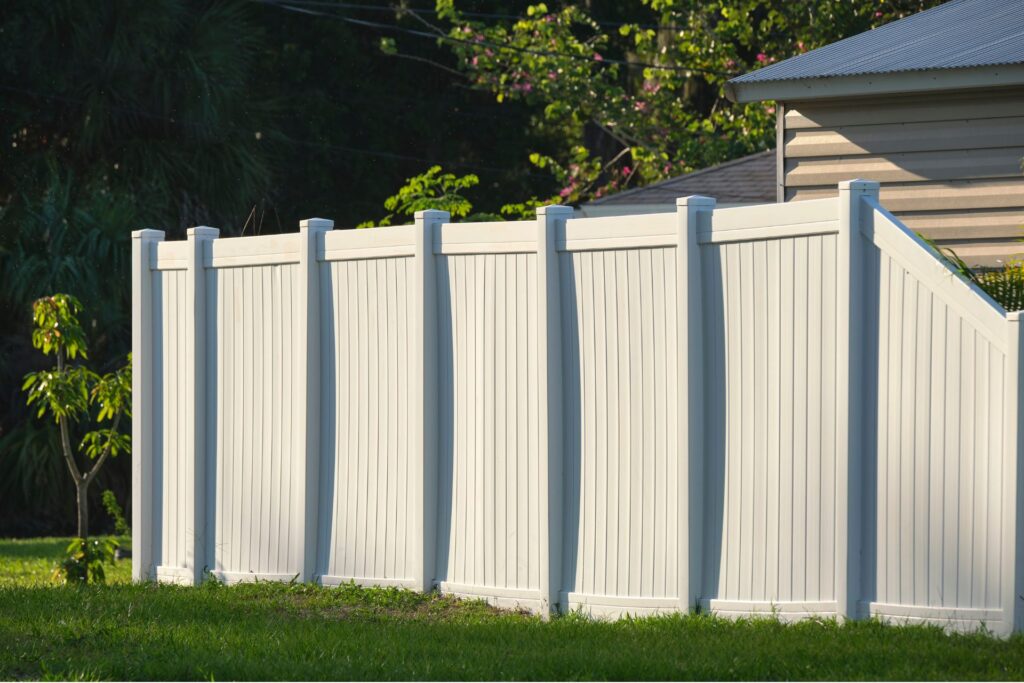
Cost Considerations
When planning a fencing project, it’s crucial to consider various cost factors to ensure you stay within budget while achieving the desired results. This section will delve into the key aspects of cost considerations, including material costs, installation costs, and the long-term value of investing in high-quality privacy fencing.
Material Costs
The cost of fencing materials can vary significantly depending on the type you choose. Here’s a breakdown of some common fencing materials and their associated costs:
- Wood: Traditional wood fencing is popular for its natural appearance and versatility. Prices can range from $15 to $30 per linear foot, depending on the type of wood (such as pine, cedar, or redwood) and the quality.
- Vinyl: Vinyl fencing is known for its durability and low maintenance. It typically costs between $20 and $40 per linear foot. While the upfront cost is higher than wood, the long-term savings on maintenance can make it a cost-effective option.
- Chain Link: This is one of the most affordable fencing options, ranging from $10 to $20 per linear foot. It’s practical for defining boundaries and securing areas but may not offer much privacy.
- Metal: Options like aluminum and steel fencing are durable and provide a modern look. These materials can cost between $25 and $50 per linear foot. Wrought iron, while more expensive, offers a classic, elegant appearance and can cost upwards of $100 per linear foot.
- Composite: Combining wood fibers and plastic, composite fencing provides the look of wood with increased durability. It typically costs between $30 and $50 per linear foot.
Installation Costs
Installation costs can also vary widely, depending on whether you opt for a DIY approach or hire a professional. Here’s a comparison to help you decide:
- DIY Installation: Taking the DIY route can save you money, as you’ll primarily be paying for materials and any tools you might need. However, it requires a good amount of time, effort, and some level of expertise. Missteps during installation can lead to increased costs in the long run.
- Professional Installation: Hiring a professional ensures that your fence is installed correctly and efficiently. Professional installation costs can range from $30 to $60 per hour, plus the cost of materials. While this option has a higher upfront cost, it can save you time and potential headaches associated with DIY projects.
Long-term Value
Investing in high-quality privacy fencing can offer significant long-term value. Here are some key points to consider:
- Durability: High-quality materials, such as vinyl or composite, are built to withstand harsh weather conditions and require minimal maintenance. This durability translates to fewer repairs and replacements over time, saving you money in the long run.
- Maintenance: Lower-quality fencing materials might require frequent maintenance, such as painting, staining, or repairs, which can add to the overall cost over time. High-quality materials often come with warranties and require less upkeep, offering peace of mind and long-term savings.
- Property Value: A well-installed, high-quality fence can enhance the curb appeal of your property, potentially increasing its value. Privacy and security are significant selling points for homebuyers, making a high-quality fence a worthwhile investment.
- Return on Investment (ROI): While the initial cost of high-quality fencing might be higher, the ROI can be substantial. Durable materials and professional installation ensure your fence lasts longer, providing ongoing privacy, security, and aesthetic benefits.
In summary, when considering the cost of a fencing project, it’s essential to weigh the initial material and installation costs against the long-term benefits. Investing in high-quality materials and professional installation can provide durability, low maintenance, and enhanced property value, making it a smart financial decision in the long run.
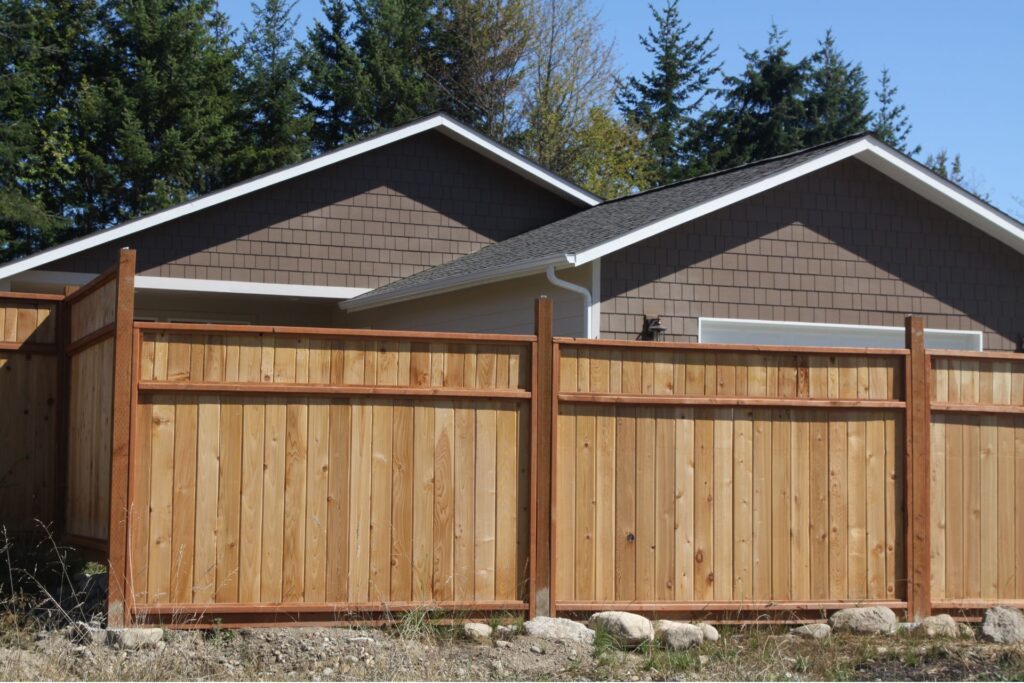
FAQs: About Best Fencing For Privacy
Conclusion
In conclusion, we’ve explored the various types of privacy fencing available in New Zealand, each with its own unique benefits and considerations. From traditional timber fences to modern composite options, there’s a style to suit every taste and budget. Remember, when selecting the best fence for your property, it’s crucial to think about your specific needs, whether it’s for privacy, security, or aesthetic appeal. We encourage you to reflect on these factors and make an informed decision. We’d love to hear about your experiences with different types of privacy fences, so please share your stories in the comments. Additionally, don’t forget to check out our other blog posts for more valuable home improvement tips and insights.
About the Author:
Mike Veail is a recognized digital marketing expert with over 6 years of experience in helping tradespeople and small businesses thrive online. A former quantity surveyor, Mike combines deep industry knowledge with hands-on expertise in SEO and Google Ads. His marketing strategies are tailored to the specific needs of the trades sector, helping businesses increase visibility and generate more leads through proven, ethical methods.
Mike has successfully partnered with numerous companies, establishing a track record of delivering measurable results. His work has been featured across various platforms that showcase his expertise in lead generation and online marketing for the trades sector.
Learn more about Mike's experience and services at https://theleadguy.online or follow him on social media:

